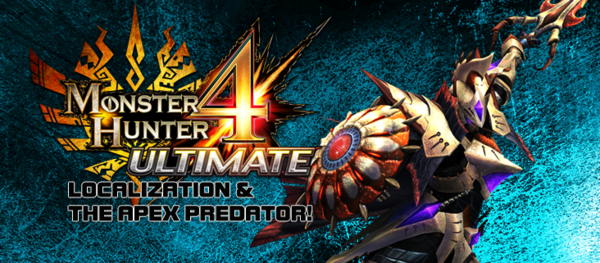
Monster Hunter 4 Ultimate: Localization & The Apex Predator!
Jan 27, 2015 // Andrew Alfonso
One of the coolest things about Monster Hunter 4 Ultimate is that it really feels like a globe-trotting adventure. In previous iterations your hunter would set up camp in one village and be tasked with helping out everyone with their numerous problems, but in MH4U you visit several villages…to help out everyone with their numerous problems. I don’t know about you guys, but I like a change of scenery every now and then, so being able to travel from village to village is a nice change of pace.
Today I’d like to talk about Cheeko Sands, the third village you’ll visit in Monster Hunter 4 Ultimate, as well as some of the monsters who inhabit the surrounding area and a couple of brand new gameplay features.
Sunnyside Up
Cheeko Sands is a bright, sunny beach-side village that’s run by a Wyvernian Village Chief. Oh, and the only inhabitants of the village are Felynes. Even the markets and armory are run by Felynes! If you’re a cat person, this should definitely be on your places-to-go list! This village stands in complete contrast to the first two villages you visit, Val Habar and Harth. Whereas those two villages are bustling with activity and have a stream of hunters coming and going, Cheeko Sands sees very few visitors. In fact, you’re one of the first visitors in quite a long time!
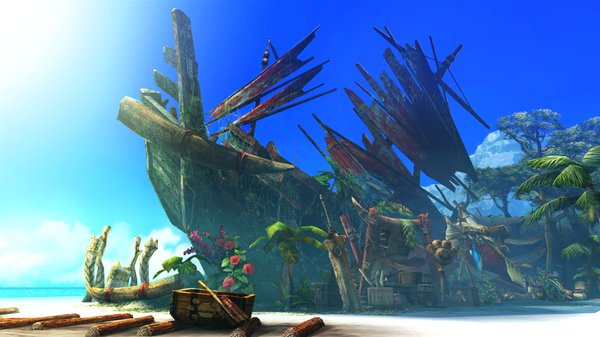
Chico takes its name from a fruit known as Sapodilla, but known as chico in the Philippines and chicosapote in Mexico, Hawaii and other parts of the Americas. Of course, in some parts of the world, chico also means little boy, so to avoid any confusion we changed the spelling but kept the pronunciation. You may have noticed this before, but in earlier Monster Hunter games we sometimes added “town” or “village” to the official name, but seeing as this beachside locale doesn’t have any actual buildings, calling it a town would be a bit odd, so we used “Sands” instead.
Overlooking Cheeko Sands is a dense and intimidating area that we called the Primal Forest. This marshy grassland is littered with the bones of gigantic monsters of the past. The lack of human presence in this area means that the vegetation has been allowed to grow to outrageous proportions.
Najarala
Najarala, the first Snake Wyvern in the Monster Hunter series, is found only in the Primal Forest, and is unlike any monster you’ve fought before. Its long body allows it to trap careless hunters and paralyze them with a vicious bite. It can also burrow underground and attack from beneath the ground. Finally, Najarala can fling its own scales at the hunter, which produce an ear-tearing sound when they land on the ground. To make matters worse, Najarala can create vibrations with its own body that will cause the thrown scales to explode, greatly damaging the hunter.
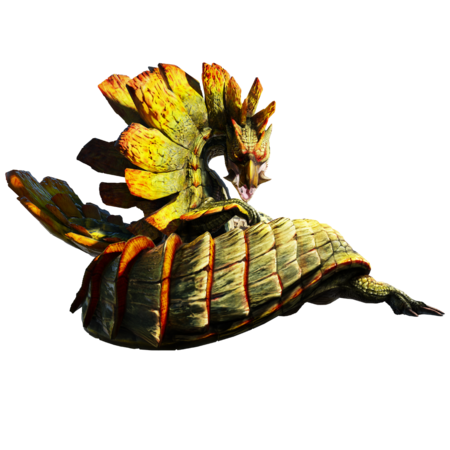
Garara Ajara, the Japanese name for the monster, had a very easy to understand meaning; the first part of the name is the onomatopoeia for rattling, and the second half of the name means snake. When we started discussing this monster, we wanted to keep the spirit of the name intact but also make it easier to pronounce. With so many a ’s in the name, we feared it’d be difficult to say for some people. We came up with over a half dozen names but most of them were derived from the same group of words, so culling the list to contain only the best ones was a painless task.
- Najarala: A combination of Naja, the genus name for cobras, and the rattling sound a rattlesnake produces.
- Sistralus: Derived from sistrum, an ancient Egyptian percussion instrument, and Crotalus , the scientific genus name for pit vipers. We used the sistrum for several reasons: you need to shake it to produce a sound, the shape of the instrument looks like the monster’s tail, and the multiple s sounds causes people to think of hissing.
- Majarox: A combination of Naja and Atrox, part of the scientific name for the diamondback rattlesnake.
- A’jara: We came up with this in case we ran into space issues. We didn’t like it too much but kept it around in case of an emergency.
To be honest, I thought this name was going to be a real challenge to localize, but MH4U director Fujioka-san really liked Najarala so we got it done on our first try! Woohoo!
Tidal Najarala
Coming up with ideas for Najarala’s subspecies was also surprisingly easy. Although the monster calls the shivering Frozen Seaway its home, this Najarala’s attacks are water based, so we began thinking of appropriate names to match its appearance and characteristics. The first two names we came up with were Hydro and Aqua, but we weren’t too crazy about them. We’ve seen countless enemies with the same name in other games, and we also thought they felt too “warm” compared to the monster’s habitat. The idea to use Tidal came from wanting a name that felt more aggressive and ruthless to match the monster’s behavior. We presented all three ideas to Fujioka-san, who agreed with us that Tidal sounded like a good fit for the subspecies.
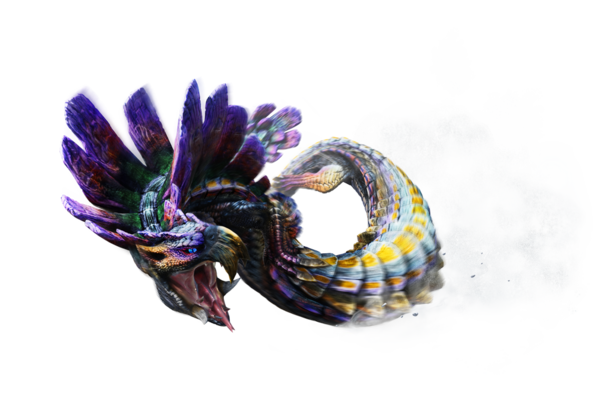
Nerscylla
Like Najarala, Nerscylla introduced a brand new species of monster to the Monster Hunter series, called Temnocerans. These spider monsters are vicious predators that use a diverse set of attacks to hunt its prey. Not only will they ensnare you in their strong webbing, but the large spikes on their backs can poison you, and one shot from their stinger will send you into a deep sleep. This thing is a nasty piece of work!
Nerscylla, much like Gore Magala and Kecha Wacha, was a name that we liked quite a bit so we didn’t want to mess around with it. The original name was a combination of Nergal, the Mesopotamian god of plague and war, and Neoscona scylla, the scientific name of an orb-weaving spider. The members of the localization team did our due diligence, however, and offered a couple of alternative names, such as Azravel (combination of Azrael and veleno , poison in Italian…and also includes ravel in the name!) and Thranid (combination of Thanatos and arachnid), but we decided that our suggestions didn’t offer anything wholly unique compared to the original name, so we recommended sticking with that instead.
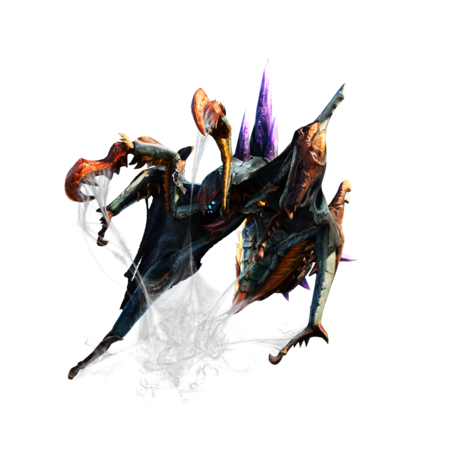
Shrouded Nerscylla
The Nerscylla subspecies is a peculiar beast that wears the hide of a Khezu for protection, and instead of poison, uses a paralyzing agent to incapacitate its enemies. Once it has paralyzed its prey, the monster often burrows into the ground and devours its helpless victim from below. We liked the subtle details that went into designing this monster, and wanted to express this in the subspecies name. We tossed around some generic names such as Grim and Reaper, but we strongly suggested going with Shrouded Nerscylla. We felt that it was a neat name that describes how the Nerscylla wears a monster’s hide like a hood, and at the same time associating it with death and the Grim Reaper.
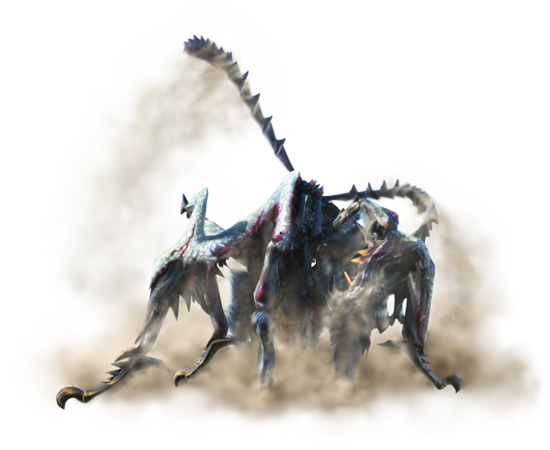
Top of the Food Chain
To cap off this week’s blog, I wanted to introduce one new gameplay wrinkle that you’ll discover during your time with Monster Hunter 4 Ultimate. The first half of the game’s story (basically, the Monster Hunter 4 portion) focuses on Gore Magala and how it’s infecting other monsters with a virus-like substance that the Guild has dubbed the Frenzy. Monsters afflicted with the Frenzy become unpredictable in battle, and to make matters worse, they can also infect hunters with the same virus.
Like Gore Magala and Kecha Wacha, we had to localize this term in time for Tokyo Game Show 2012, and tentatively named it Feral Wyvern Virus, which was a literal translation of the Japanese term, Kyouryu Uirusu (狂竜ウイルス). When we started the official localization for Monster Hunter 4 Ultimate, we were able to revisit this term to make it something easier to understand – and cooler. I suppose in Japanese, many “cool” terms are made up of several different kanji characters strung together, but in English we tend to rely on single, impactful words that can be used on their own or naturally in character dialogue. Also, the moniker “Feral Wyvern” seemed a bit misleading as not all monsters are wyverns, and feral infers a wild animal, which all of the monsters are to begin with.
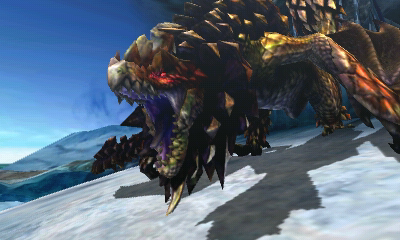
Frenzied Seregios
Believe it or not, we spent a lot of time brainstorming for possible terms to replace Feral Wyvern Virus because we needed something that could be used to describe the virus itself and when monsters or hunters are afflicted with it. Some names we came up with were Affliction, Froth, Defiled, but we liked the Frenzy the best as it describes the change of behavior in a monster. Monsters that are afflicted with the Frenzy are granted increased attack power and movement speed, but also become erratic in behavior and sometimes start attacking in weird patterns. We thought that frenzy drove that point home well.
New to the Japanese version of Monster Hunter 4G are monsters that can, like the hunters, overcome the Frenzy and use it to grant themselves unimaginable power. In Japanese, this was called Kyokugen Jyoutai (極é’状態), or, literally, Extreme Mode. Like the Frenzy, we wanted something that in one word described this phenomenon, but we settled on the term Apex early on. It’s a short, powerful word and has the apex predator connotation associated with it, so we knew it’d immediately leave an impression on Monster Hunter fans.
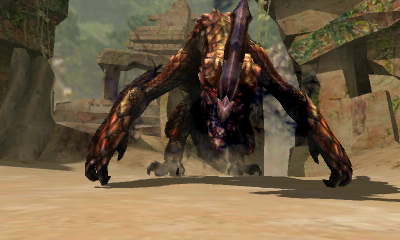 Welcome to your new nightmare, Apex Seregios!
Welcome to your new nightmare, Apex Seregios!
That wraps it up for this installment. Thanks a lot for reading! Compared to the first two articles, our proposals for Nerscylla and Najarala were relatively problem-free, which made my work easier but also makes writing my reasoning a lot less dramatic! Next time I’ll continue to talk about some monsters that lurk around Cheeko Sands as well as touch upon some of the new features in Monster Hunter 4 Ultimate that’ll make your playing time a lot more enjoyable!
-
Brands:Tags:
-

Loading...
Platforms:
